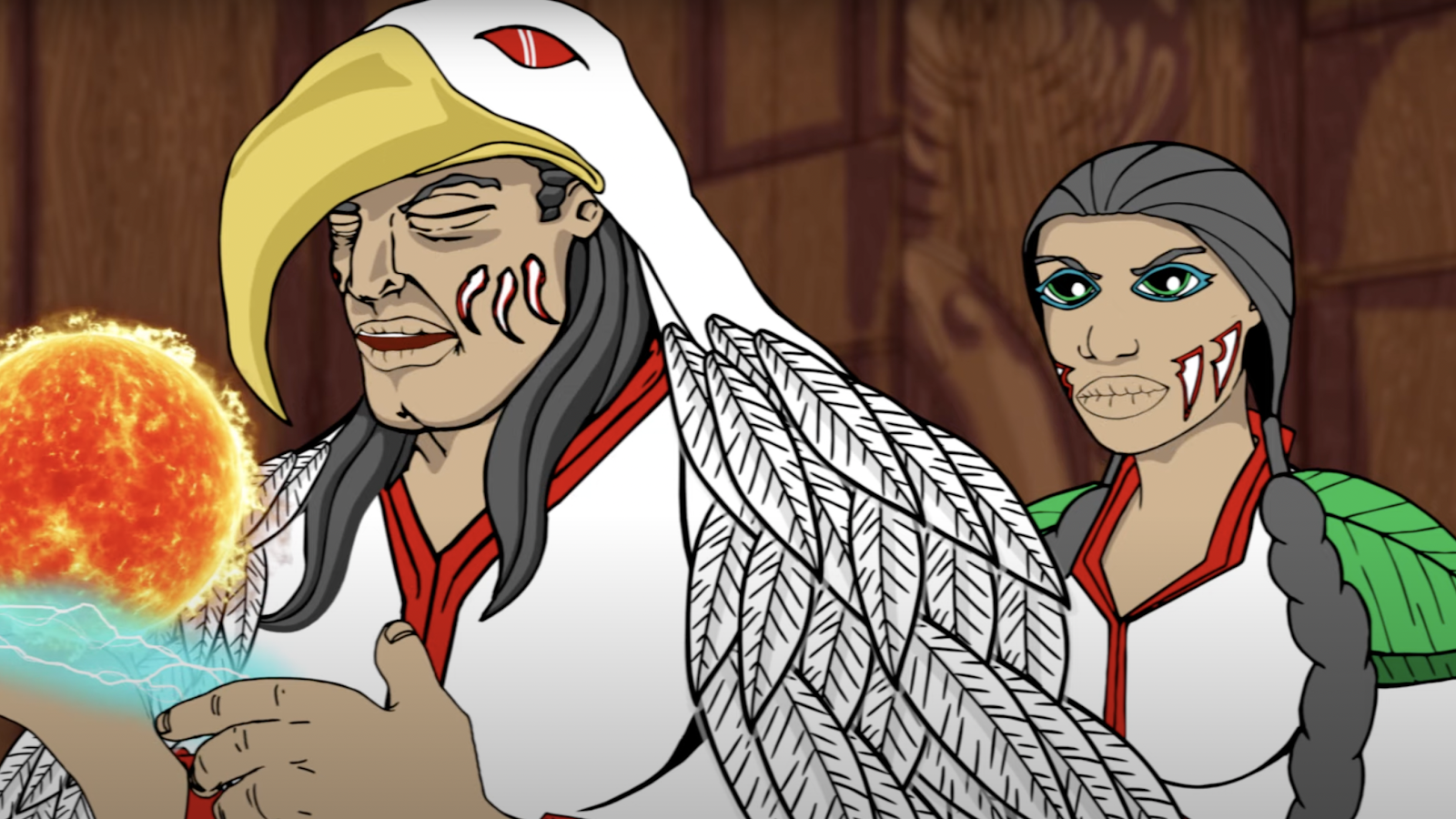I watched one of the Indigenous Stories Series “Raven Steals the Light,” produced from the TELUS STORYHIVE channel on YouTube. It combines cinematic and animated storytelling techniques to merge the real world with the mythological world. The film not only presents indigenous legends but also portrays the process of knowledge transmission through storytelling in a cinematic form. (See Image 1 and 2)
Image 1 The Indigenous Elder telling stories to the children
Image 2 Animated depiction of the storyteller's narrative
At the beginning of the video, there is a scene where an elder tells stories to children, illustrating the way indigenous people teach and pass on knowledge. As Hausknecht et al. (2021) state, in many indigenous communities, the storytelling role of elders is a vital part of teaching and learning history, language, place, culture, and Indigenous knowledge. It is a core method of indigenous learning. This is a reflection of how traditional storytelling practices are integrated with modern technology. Through this modern media, the video not only showcases the way indigenous peoples transmit and acquire knowledge in a cinematic format but also conveys indigenous worldviews and values to a broader audience (global online viewers). In the video, animated scenes combined with the narrator's monologue depict how Raven steals the light and brings it to the world. This narrative expresses indigenous views on the origin of the world, subverting the Western-dominant Christian belief that God created the world. This storytelling approach, while conveying indigenous voices, also challenges the Western-dominated worldview. Essentially, the sharing of stories by indigenous peoples can counter the imperialistic efforts to erase their histories because storytelling is an inherent form of expression. It is an indispensable part of how indigenous communities understand the world, human purpose, and spirituality (Mines, 2019).
The use of digital media storytelling plays a significant role in amplifying indigenous voices, helping to resist the colonization of indigenous knowledge systems and promoting the self-repair of Indigenous culture and knowledge. This storytelling method transcends borders, allowing a broader audience to access and hear indigenous stories, thus weakening the long-term effects of colonization on indigenous knowledge structures. However, digital storytelling also has its limitations. For instance, due to time constraints, filming techniques, and dialogue adjustments, it may simplify or misrepresent the deeper understanding of indigenous community cultures, leading to potential distortions of original knowledge. Additionally, audiences may interpret videos or blogs based on their own cultural backgrounds and knowledge systems, which may result in a deviation from the original indigenous cultural understanding, increasing the risk of misreading indigenous cultures.
References:
Hausknecht, S., Freeman, S., Martin, J., Nash, C., & Skinner, K. (2021). Sharing Indigenous Knowledge through intergenerational digital storytelling: Design of a workshop engaging Elders and youth. Educational Gerontology, 47(7), 285–296. https://doi-org.login.ezproxy.library.ualberta.ca/10.1080/03601277.2021.1927484
Mines, S. (2019). Storytelling as a method of indigenization. Abenaki Language and Cultural Preservation, Middlebury College. https://sites.middlebury.edu/abenaki/storytelling-as-a-method-of-indigenization
YouTube. (2021, May 28). Indigenous Stories [Video]. YouTube. https://www.youtube.com/watch?v=74Y38Oy4AM4&list=PLiVF4Ce6dMMMbimCD32MToV81LANJB3LC&index=1



Comments
Post a Comment